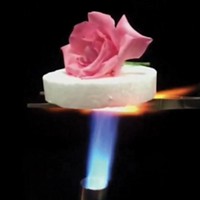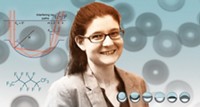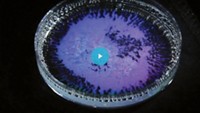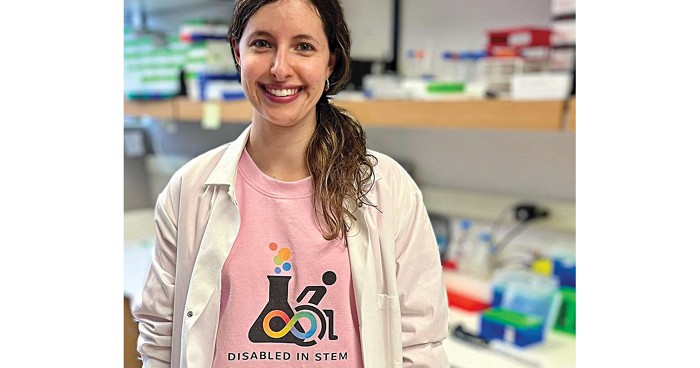Advertisement
Grab your lab coat. Let's get started
Welcome!
Welcome!
Create an account below to get 6 C&EN articles per month, receive newsletters and more - all free.
It seems this is your first time logging in online. Please enter the following information to continue.
As an ACS member you automatically get access to this site. All we need is few more details to create your reading experience.
Not you? Sign in with a different account.
Not you? Sign in with a different account.
ERROR 1
ERROR 1
ERROR 2
ERROR 2
ERROR 2
ERROR 2
ERROR 2
Password and Confirm password must match.
If you have an ACS member number, please enter it here so we can link this account to your membership. (optional)
ERROR 2
ACS values your privacy. By submitting your information, you are gaining access to C&EN and subscribing to our weekly newsletter. We use the information you provide to make your reading experience better, and we will never sell your data to third party members.
Diversity
Newscripts
Showing off true colors
by Katherine Bourzac
July 20, 2019
| A version of this story appeared in
Volume 97, Issue 29
Celebrating LGBTQ+ STEM day

On July 5, people around the world celebrated the second annual International Day of LGBTQ+ People in Science, Technology, Engineering, and Maths (#LGBTSTEMDay). Nine member organizations, including Pride in STEM, started the event last year to increase the visibility of lesbian, gay, bisexual, transgender, queer, and questioning people in STEM.
LGBTQ+ people are less likely to stay in STEM fields, sometimes because of harassment, and sometimes simply because of isolation. But scientists who feel comfortable being out at work report more positive experiences in the workplace, according to a survey by the Royal Society of Chemistry. Celebrating LGBTQ+ STEM day is a way to foster a welcoming atmosphere, says Lia Li, a quantum physics researcher at University College London (UCL).
Li co-organized a wikithon to highlight scientists whose work is often overlooked and to correct the historical record. About 30 participants ate rainbow cake and created or updated Wikipedia entries for LGBTQ+ scientists and engineers, including Savitri Hensman, who studied chemical engineering at UCL before becoming an activist and launching London’s Black Lesbian and Gay Centre. In the US, the University of California, Los Angeles’s Queers in STEM group marked the day with networking and an open mic for people to talk about their research.
Some of the celebration happened online. Tia Martineau, an incoming PhD student at the University of New Hampshire, started a Twitter thread for people to identify their queer role models or tell their own stories. People showed off rainbow tardigrade shirts and their diplomas. C&EN reader and San Francisco cell biologist Shayan Hosseinzadeh posted a photo of his rainbow manicure taken on the shore of Lake Tahoe, where he celebrated by relaxing with friends and reading James Baldwin.
Hot pics

When Juan Bermúdez Garcia was sunbathing on the beach in May, he noticed that the tattoo on his arm felt much hotter than the rest of his skin. So he did what he does anytime he gets interested in what he calls the “exciting hidden world in the heat that surrounds us.” He took a thermal photo and posted it to his Instagram account, @thermogramer, with a warning to always wear sunscreen—especially if you have tattoos. “Tattoos have pigments that can absorb IR light and increase the temperature,” Bermúdez Garcia tells Newscripts.
Bermúdez Garcia is a postdoc in a joint position at the Materials Science and Metallurgy Department of the University of Cambridge and at the University of A Coruña. He became fascinated with thermal imaging while working on hybrid perovskites as a PhD student. He found a family of these materials that cools down under small applied pressures and that might be used to make future low-power refrigeration systems (Nat. Commun. 2017, DOI: 10.1038/ncomms15715).
This discovery inspired his thermal photography habit. “If people can see and understand the hidden thermal world, they can become conscious of the impact that heat has on our lives,” he says. What’s the best way to cook a soft egg? What will future energy-efficient fridges look like? “With @thermogramer, you can see the heat with your own eyes,” he says.
Bermúdez Garcia hopes his images will inspire people to be more environmentally friendly—or just to learn something fun. One post shows a simple home experiment that makes materials strain visible: stretching a rubber balloon. The material becomes hot when pulled, but if you let it reach ambient temperature while stretched out, the rubber will cool down when it’s released. The Newscripts gang plans to try it next time we’re invited to a party.
Katherine Bourzac wrote this week’s column. Please send comments and suggestions to newscripts@acs.org.
CLARIFICATION
This story was updated on July 24, 2019, to add more information about Bermúdez Garcia's current position. It is a joint position at the University of Cambridge and the University of A Coruña.







Join the conversation
Contact the reporter
Submit a Letter to the Editor for publication
Engage with us on Twitter